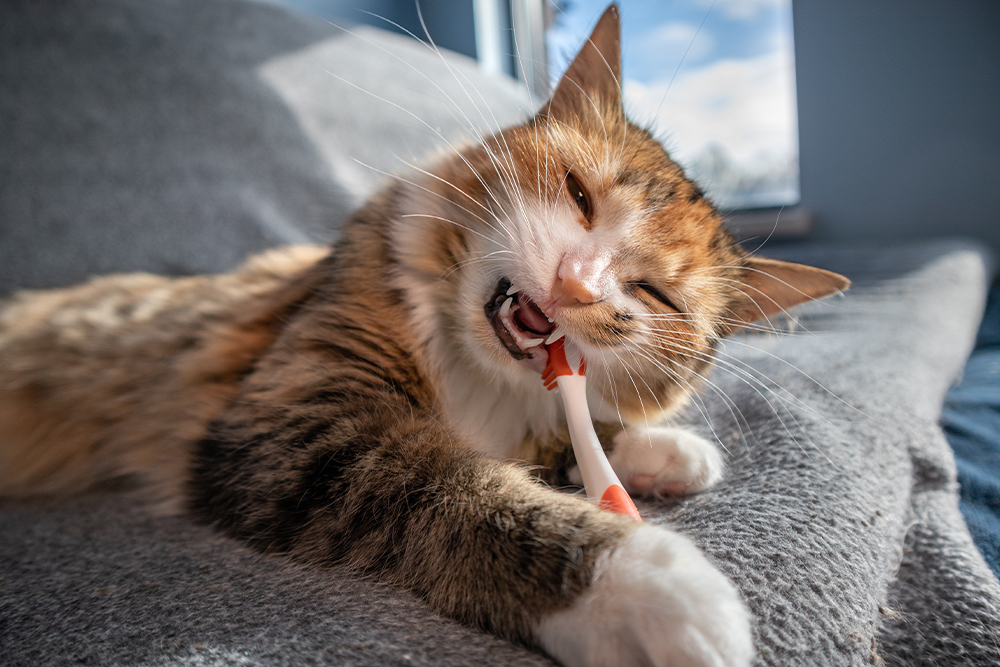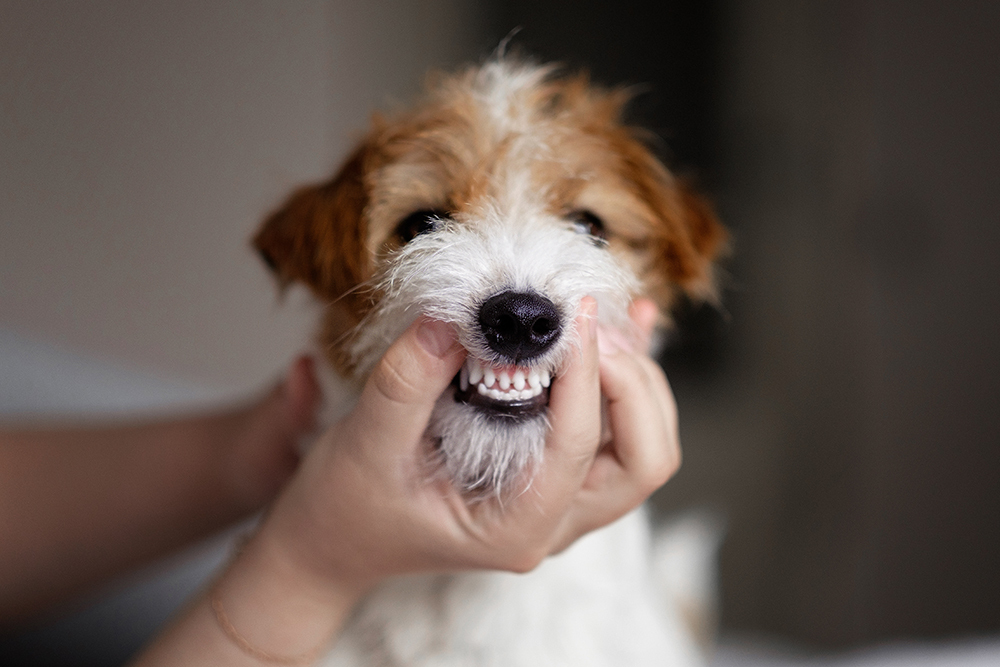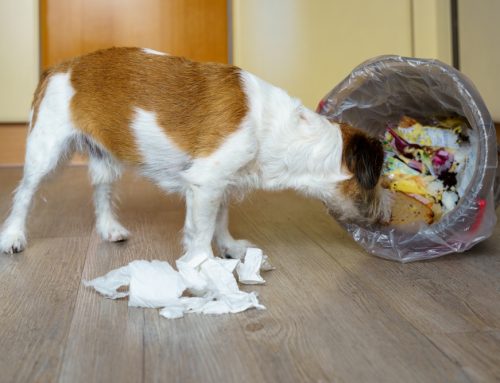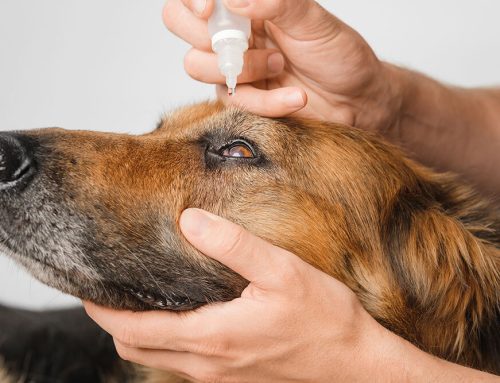Dental Dangers in Pets: Why Oral Health Matters More Than You Think
Most pet owners know the routine: feed nutritious meals, schedule annual checkups, and get plenty of playtime in. But dental care often slips to the bottom of the to-do list- until that unmistakable whiff of bad breath or a sudden refusal to eat brings it back into focus.
At Stanton Pet Hospital, supporting pets means caring for every detail, including their teeth. Oral health is more than just fresh breath. Dental disease is one of the most common and preventable conditions affecting dogs and cats, and its consequences go far beyond the mouth. Understanding what’s at stake helps you make the best choices for your pet’s comfort, longevity, and overall wellbeing.
What Is Dental Disease in Pets?
Dental disease typically starts with plaque: a film of bacteria that sticks to teeth. Without daily removal, this hardens into tartar, which irritates the gums and leads to gingivitis. If left untreated, gingivitis progresses to periodontitis- a serious infection that destroys the tissue and bone supporting the teeth.
Some pets are more vulnerable than others. Small breeds and toy dogs, for example, often have crowded teeth that trap food and bacteria. Genetics and tooth alignment can cause these pets to develop dental disease at an earlier age.
Oral Health Impacts More Than Just the Mouth
Many pet owners are surprised to learn that dental disease can quietly affect organs far beyond the teeth. Bacteria from infected gums can enter the bloodstream and reach the heart, kidneys, and liver. Over time, this raises the risk of more serious conditions. The AVMA highlights dental care as an essential part of a pet’s preventive healthcare routine.
Poor oral health also brings painful complications. Periodontal infections can lead to abscesses, tooth loss, and even oral tumors. While oral tumors are less common, chronic inflammation increases risk. The ACVS guide to oral tumors offers helpful background on what to watch for.
Spotting Dental Trouble Early
Pets instinctively hide discomfort, which means dental disease often advances silently. What may seem like a minor habit change- eating slower, licking more- can actually signal deeper oral pain. Being familiar with early warning signs helps you step in before your pet is truly suffering.
Early Clues
- Bad breath
- Yellow or brown tartar buildup
- Red or swollen gums
- Drooling or increased licking of the lips or paws
These symptoms often go unnoticed without a close look, so it’s worth lifting your pet’s lip regularly to check their gumline and tooth surfaces.
Advanced Red Flags
- Difficulty chewing or dropping food while eating
- Loose, broken, or missing teeth
- Swelling around the face, jaw, or under the eye
- Pawing at the mouth or rubbing the face on furniture
- Behavioral changes like withdrawal, irritability, or sleeping more than usual
When these signs appear, it’s time for a dental exam. A preventive wellness visit gives the veterinary team a chance to identify concerns early- often before your pet shows obvious discomfort.
The Consequences of Putting Off Dental Care
When dental disease is ignored, the risks compound:
| Potential Complication | Possible Impact |
| Tooth loss | Pain, difficulty eating, reduced quality of life |
| Jaw fractures | Common in small dogs with weakened jaw bones; more on jaw fractures |
| Oronasal fistulas | Painful openings between the nasal and oral cavity |
| Systemic infections | Chronic inflammation affecting vital organs |
The AAHA guide to oral health emphasizes that early care not only prevents suffering, but also saves on long-term costs.
How Dental Problems Are Diagnosed
A visual oral exam is just the beginning. Many issues start below the gumline. Dental X-rays are vital for spotting hidden root infections, bone loss, or fractures that can’t be seen with the naked eye.
At Stanton Pet Hospital, our diagnostic tools provide clear insights into your pet’s condition. All cleanings and X-rays are performed under general anesthesia, which allows for a thorough and stress-free evaluation. The AAHA overview of anesthesia and dental cleanings explains why anesthesia is essential- and far safer than sedation-free options.
We follow Fear Free principles throughout, keeping your pet as calm and comfortable as possible from check-in to recovery.
Common Treatments for Dental Disease
Depending on the stage and severity of disease, treatment may include:
- Scaling and polishing to remove tartar and reduce plaque buildup
- Extractions for damaged or infected teeth
- Pain relief and antibiotics
- Home dental care: brushing, chews, or dental diets
- Surgery for advanced cases, such as tumors or jaw fractures
Prevention: The Best Tool for Healthy Teeth
Dental disease is largely preventable. The most effective strategies include:
- Brushing regularly with pet-safe toothpaste
- Scheduling annual cleanings or as recommended based on breed and age
- Using dental diets and treats with the VOHC seal
- Monitoring at home by checking teeth and gums
- Avoiding hard toys or bones that can crack teeth.
Prevention doesn’t just protect the mouth- it protects overall health and well-being.

FAQs About Pet Dental Care
How often should pets have dental cleanings?
Most pets benefit from cleanings once a year, though some may need them more often depending on their breed and dental history.
Is anesthesia really necessary?
Yes. Anesthesia ensures a pain-free and thorough cleaning, including beneath the gumline, and allows for X-rays and extractions if needed.
What happens if baby teeth don’t fall out?
Retained deciduous teeth can cause overcrowding and misalignment. Deciduous tooth removal may be necessary to avoid long-term complications.
Are there risks if dental disease is left untreated?
Absolutely. Beyond pain and tooth loss, untreated infections can spread to vital organs, weaken the immune system, and shorten lifespan.
Let’s Protect Your Pet’s Smile- and Their Health
Oral health plays a central role in your pet’s comfort, nutrition, and longevity. With daily habits and timely care, you can help prevent painful dental disease and avoid costly treatments in the future.
The team at Stanton Pet Hospital is here to support you every step of the way- from routine cleanings to advanced treatments. Request an appointment today and let’s keep your pet’s smile strong, healthy, and pain-free.






Leave A Comment